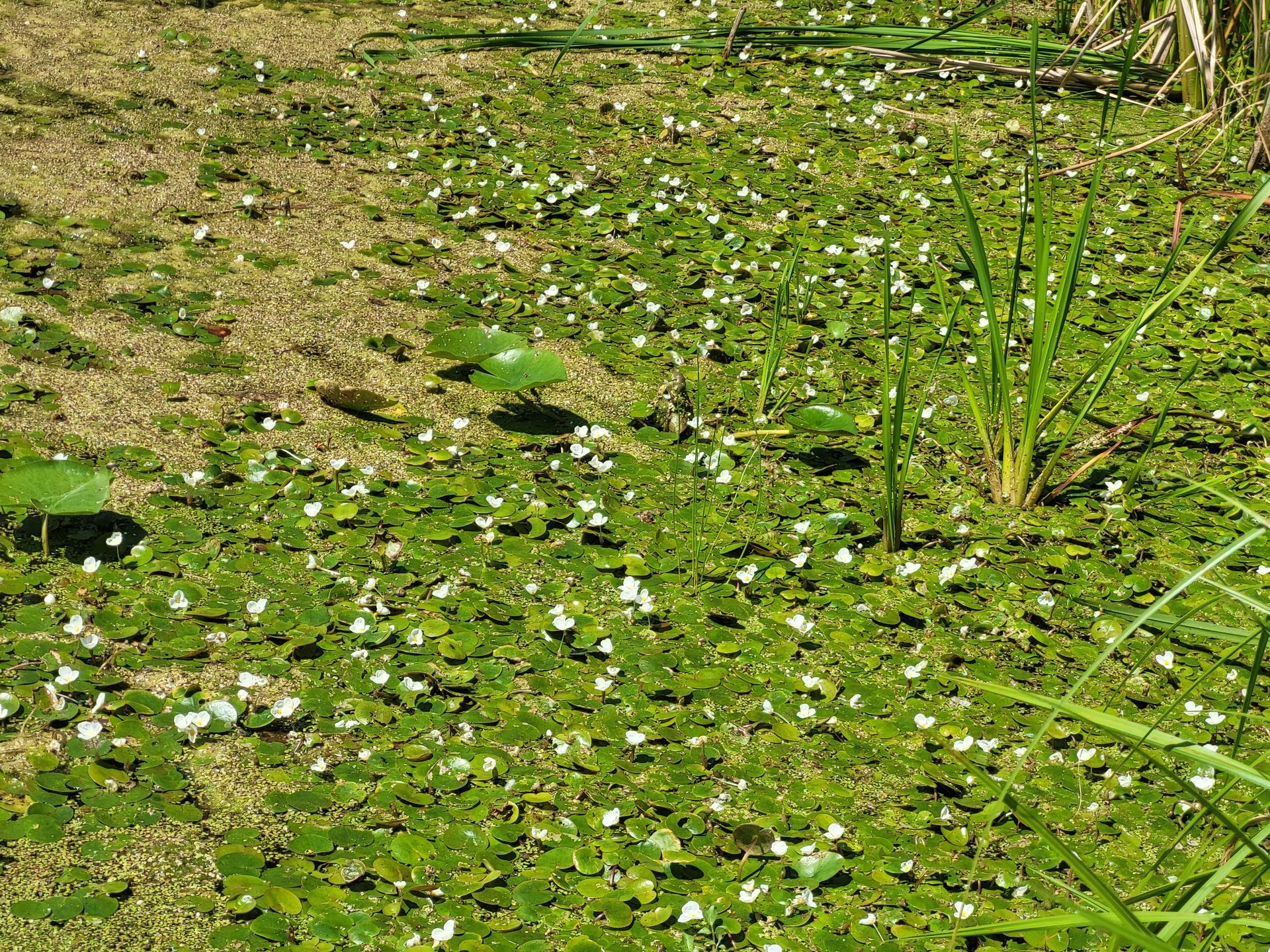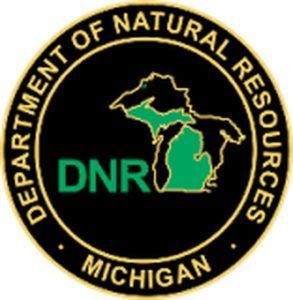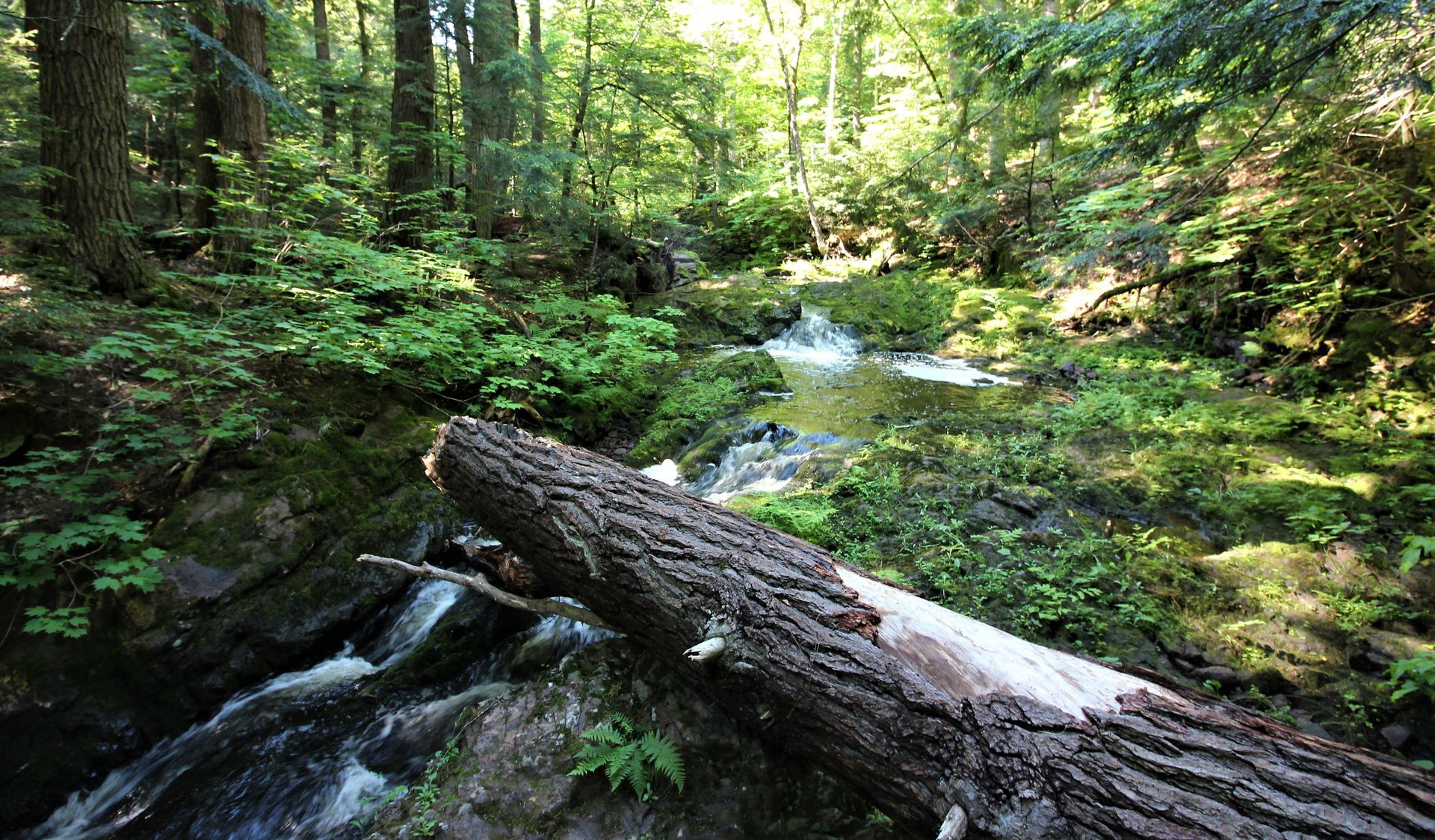What do Healthy Aquatic Habitats Crave? Fish Sticks!
People are drawn to Michigan’s lakes for many reasons – the opportunity to go fishing, boating, wildlife viewing. The natural beauty of inland lakes also makes shoreline properties highly sought-after for many landowners. As landowners, we want to develop and modify the land we have to fulfill a specific purpose. We may clear shoreline vegetation, build structures, or put in modifications like seawalls and sandy beaches. While this benefits us, we don’t consider an important aspect of shoreline living: “does this benefit the lake?”
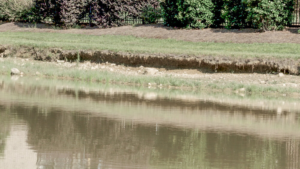
Dragonfly Pondworks, 2022
Why should landowners care about what benefits the lake? With the removal of vegetation such as plants and trees from the shoreline, deep roots which keep the soil compacted and in place are lost. With their removal, the soil becomes loose and susceptible to erosion from waves created by boats and the wind. These waves slowly chip away at a shoreline property over time. Not only does deep-rooted vegetation help keep the soil on the shoreline, but it also prevents runoff from moving through the lawn and into the lake, polluting it with dirty rainwater, fertilizers and household chemicals. Runoff in the form of added nutrients can lead to an increase in algae growth, which can be detrimental to aquatic habitats and even property value.
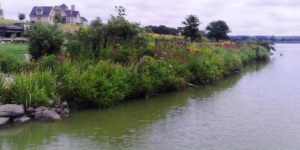
Healthy Lakes & Rivers Program
“Designing with nature” is one method lake-edge landowners can use to help create healthy, vibrant shorelines that act as a “buffer” around the lake. To design landscapes with nature in mind, we need to start near the home, in the upland zone. Reducing chemical and fertilizer use as well as limiting hard surfaces such as pavement helps prevent runoff into the lake. “Buffer zones” are also an important aspect of shoreline management as native plants, shrubs and trees near the lake edge will prevent shoreline erosion and provide more habitat for wildlife. The buffer zone can also absorb excess nutrients caused by runoff from entering the lake. Furthermore, minimizing the area of mowed lawn near shorelines is also a good management strategy as typical lawn grass doesn’t have deep roots to hold the soil, which creates a greater threat for shoreline erosion. Designing with nature involves the careful management of lakeside vegetation to slow down and dissipate wave action from eroding natural shorelines.

Healthy Lakes & Rivers Program
Another lake habitat improvement strategy that is becoming ever more popular is the use of “ Fish Sticks .” No, not those battered and fried treats we see at the supermarket, but tree bundles! Naturally, as shoreline trees drop into lakes they create a barrier for wave action to slow down before hitting the shoreline. They also provide shelter, breeding, and feeding areas for fish as well as nesting and sunning areas for turtles, aquatic insects, songbirds, and ducks. The Michigan Department of Natural Resources (MDNR) uses Fish Stick structures to help restore woody habitats in lakes and increase the quality of the lake itself.
Fish Sticks are bundles of three to five trees and their branches that are either partially or fully submerged in the lake and provide fish and wildlife with suitable habitat. It’s best to know which area you want to place a Fish Stick projec t in and its design as a single cluster occupies at least 50 feet of shoreline. Fish Sticks are tied to posts or other trees so they remain in place and won’t drift away from the initial spot they were deployed. The optimal time for placing a Fish Stick is in the winter when the lake is frozen. These large bundles of logs and brush can be built directly on top of the ice. Once the ice melts, the Fish Stick structure will fall into place and stay submerged.
When planning to build any type of aquatic habitat, it’s best to work with your local MDNR fisheries biologist, county land and water conservation department, landscapers, and local zoning department for the necessary permits. Overall, a healthy shoreline habitat used in conjunction with aquatic habitat enhancement structures like Fish Sticks and brush bundles can promote improved lake habitat and fish and wildlife health, as well as protect lakeshore properties and their value.
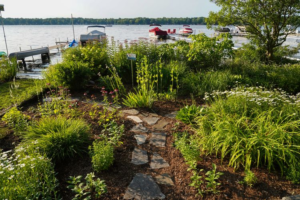
Mark Bugnaski Photography
If you are interested in volunteering to help improve shoreline habitat and contribute to healthy lake habitats in Michigan, join us at our upcoming On the Ground volunteer event at Au Train Lake in Alger County on Saturday, March 4, 2023. Please visit https://mucc.org/inspire_events/au-train-lake-fish-habitat-enhancement-project/ to register
The post What do Healthy Aquatic Habitats Crave? Fish Sticks! appeared first on Michigan United Conservation Clubs.
Recent Posts
